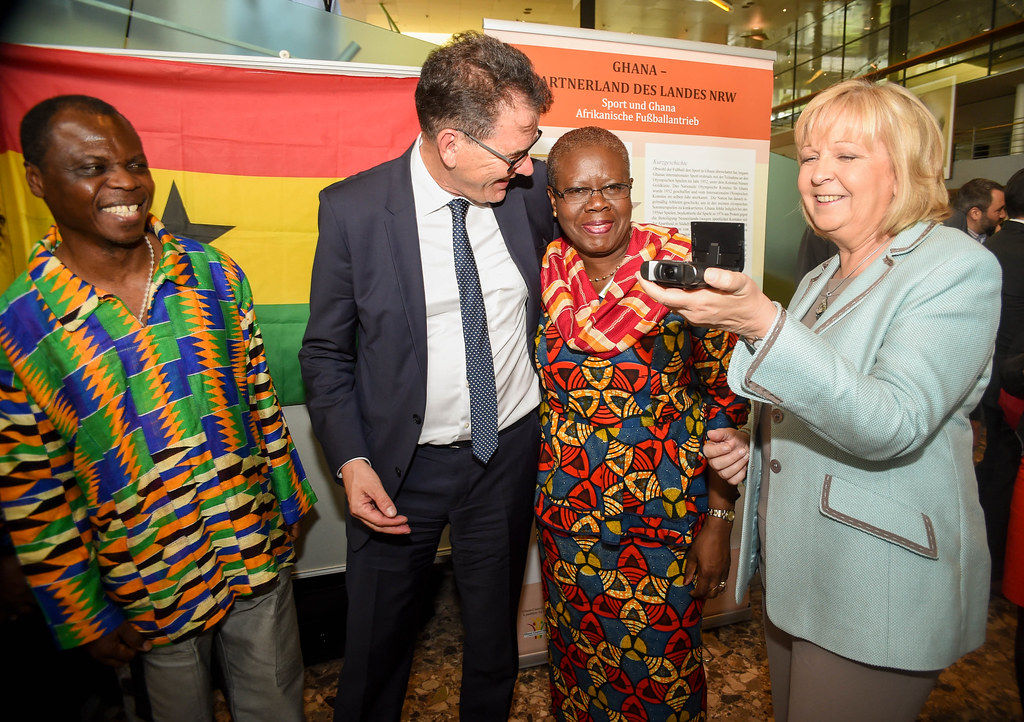
The advertising world recently mourned the passing of Neil Kraft, an influential creative director whose vision reshaped the branding landscape for some of the most prominent names in fashion and lifestyle. Mr. Kraft, who died at his East Hampton home on Sept. 6 at 68 after an illness with cancer, left an indelible mark on campaigns for Calvin Klein, Esprit de Corps, and Barneys New York, pioneering approaches that continue to resonate today. His work consistently transcended traditional advertising, crafting narratives that deeply connected with audiences.
Known for his ability to combine “true creative expertise with business acumen,” as Jenny B. Fine noted in Women’s Wear Daily in 2013, Mr. Kraft was a rare force. He understood that effective advertising extended beyond product features, striving instead to evoke an emotion, a sense of belonging, or an aspiration. His philosophy was clear: “What I do is try to create beautiful things and create something simple and meaningful that will break through.” This direct yet directional approach allowed him to produce campaigns that became, in essence, cultural phenomena, imprinting themselves on the collective consciousness.
This article will embark on a comprehensive exploration of Neil Kraft’s extraordinary career, from his pivotal roles in revitalizing established brands to the founding and sustained success of his own agency, KraftWorks. We will examine the innovative strategies he employed, the iconic campaigns he orchestrated, and the lasting influence he exerted on an industry perpetually seeking to capture the zeitgeist. His story is one of consistent creative daring, a relentless pursuit of beauty and meaning, and an unwavering commitment to breaking through the conventional.

1. **Early Career and the Barneys New York Transformation**Neil Kraft began what would become a profoundly influential tenure at Barneys New York in 1982. For nine years, he led the in-house agency, steering its creative direction with a distinctive flair that would fundamentally alter the store’s public image. It was during this period that Barneys evolved from a prominent retailer into an “internationally known fashion destination with an edge,” a testament to Kraft’s innovative marketing strategies and his keen understanding of aspirational branding.
Working alongside notable talents such as Glenn O’Brien, Simon Doonan, and Steven Meisel, Mr. Kraft revitalized the retail brand through inventive methods. He often utilized “found footage and humor” in his campaigns, a departure from the more staid advertising norms of the era. This approach imbued Barneys with a playful yet sophisticated identity, signaling a new direction in fashion retail marketing that prioritized cultural relevance and a unique brand voice.
Among his most innovative campaigns were those that featured celebrities in a novel way, breaking from the traditional use of models. He enlisted figures like Spike Lee and Ed Ruscha, showcasing them in Barneys outfits, thereby injecting a sense of authenticity and cultural cachet into the brand. Even more daring were campaigns that were “completely devoid of fashion,” pushing conceptual boundaries to make a statement.
One such campaign utilized Garry Winogrand’s evocative shot of a tough-looking crowd at a diner, paired with the line, “A conspiracy of taste.” Another photograph by Roy DeCarava depicted a moody Harlem dance floor with two dancers, accompanied by the line, “A style all our own.” Perhaps most memorably, a campaign featured a nudist colony with the arresting declaration, “You will all need clothes.” As ArtForum once observed, these photos “elevated the everyday” of life, turning advertising into art.
Mr. Kraft’s philosophy was not about selling individual garments but rather an entire ethos. “We’re selling a mood and a lifestyle,” he stated in a New York Times article at the time. He clarified, “We don’t expect people to look at the ads and come running down to buy a suit. We hope they’ll look at the ads and remember Barneys is a great place.” This visionary approach extended to his instrumental role in renaming the store from Barney’s to Barneys New York, removing the apostrophe to modernize its image and solidify its status as a sophisticated global brand.
Read more about: When Perfection Fails: Inside the Stories of Celebrities Who Regret Going Under The Knife

2. **Defining Campaigns at Calvin Klein**Following his impactful tenure at Barneys, Neil Kraft moved to Calvin Klein in 1992, assuming the role of senior vice president of advertising and creative services. Here, he became a pivotal figure in orchestrating some of the brand’s most enduring and, at times, provocative campaigns, working closely with Calvin Klein himself. These campaigns were instrumental in shaping the brand’s image for a generation and beyond.
It was under Mr. Kraft’s creative direction that the “iconic 1992 Calvin Klein underwear ads featuring Marky Mark and Kate Moss” were conceived and executed. These advertisements quickly became a cultural touchstone, known for their raw sensuality and intimate portrayal of the nascent supermodel and the emerging musician. The campaigns captured a bold, unapologetic spirit that redefined celebrity endorsement and fashion advertising.
Further solidifying his reputation for pushing boundaries, Mr. Kraft was also behind the memorable imagery of Marky Mark “frolicking topless with Marky Mark to sell blue jeans.” These campaigns were more than just advertisements; they were cultural moments that sparked conversation, captured headlines, and firmly cemented Calvin Klein’s image as a brand synonymous with modern desire and youthful rebellion.
Beyond apparel, Mr. Kraft also led the creative efforts for Calvin Klein’s fragrance line, producing advertisements that featured a constellation of the era’s top supermodels. Campaigns for these fragrances showcased luminaries such as Kate Moss, Christy Turlington, and Naomi Campbell, further intertwining the brand with aspirational beauty and a sophisticated lifestyle.
Calvin Klein himself lauded Mr. Kraft’s talents, stating, “He was a real talent. I worked with him when he was in charge of our in-house agency doing the marketing and going on shoots for campaigns. He was a wonderful guy, smart, and we were very much on the same page.” This close collaborative relationship underscores the depth of Kraft’s influence and his integral role in shaping the aesthetic and marketing strategy of one of the world’s most recognizable fashion houses.
Read more about: OMG, Remember Them?! These 15 Pop Stars Were Our Ultimate Summer & Music Video Heartthrobs!

3. **Leadership at Esprit de Corps and “What would you do to change the world?”**After his significant contributions to Barneys New York, Neil Kraft transitioned to another major role, becoming the worldwide image director of Esprit de Corps. This move showcased his versatility and his ability to adapt his unique creative vision to diverse brand identities. At Esprit, he was tasked with redirecting the brand’s image, a challenge he met with characteristic innovation and a deep understanding of societal currents.
It was during his time at Esprit that Mr. Kraft conceived and launched the impactful “What would you do to change the world?” campaign. This initiative marked a distinct shift in advertising, moving beyond product-centric messaging to engage consumers on a more profound, values-driven level. The campaign invited introspection and encouraged social consciousness, reflecting a burgeoning trend in consumer awareness and brand activism.
The campaign’s success was immediate and undeniable. According to Mr. Kraft’s LinkedIn profile, it “generated 30,000 letters a month,” a remarkable volume of engagement for its time. This outpouring of public response was a testament to the campaign’s resonance and its ability to tap into a collective desire for positive societal impact. It transformed Esprit from a clothing brand into a platform for dialogue and community.
By engaging consumers in such a meaningful conversation, Neil Kraft not only revitalized Esprit’s image but also pioneered a form of advertising that connected brands with a broader purpose. This work highlighted his foresight in recognizing the growing importance of authenticity and social responsibility in brand building, demonstrating his enduring ability to create campaigns that were both commercially successful and culturally significant.

4. **Founding and Vision of KraftWorks**After a period of freelancing following his departure from Calvin Klein, Neil Kraft channeled his extensive experience and creative drive into establishing his own agency. In October 2000, he founded KraftWorks, a venture that would become the culmination of his vision for brand building. This new chapter allowed him to fully articulate his creative philosophy and apply it across a diverse array of clients and industries.
KraftWorks quickly established itself as a hub of “creative minds and strategists,” reflecting Mr. Kraft’s belief in collaborative excellence. Under his leadership, the agency dedicated decades to “building iconic brands, designing packaging and continuing to push the boundaries of what people thought was possible.” This ethos ensured that KraftWorks remained at the forefront of innovation, consistently delivering campaigns that were both effective and memorable.
Mr. Kraft led KraftWorks with unwavering commitment until his retirement in 2020. During these two decades, the agency flourished, becoming a testament to his enduring influence and his ability to cultivate a team that shared his dedication to groundbreaking work. His leadership fostered an environment where creativity was paramount, and the pursuit of “simple and meaningful” solutions was the guiding principle for every project.
The founding of KraftWorks represented Mr. Kraft’s ultimate expression of his career-long mission: to create advertising that wasn’t merely seen but felt, that didn’t just sell products but stories, moods, and lifestyles. It was a place where his belief in breaking through the noise with beauty and substance could be consistently realized, leaving a significant legacy of design and marketing innovation.
5. **The Iconic Voss Water Bottle Design**Among the many distinguished projects undertaken by KraftWorks, the design for the Voss water bottle stands out as a singular achievement and a powerful demonstration of Neil Kraft’s design acumen. Introduced in 2001 as part of the launch of the Voss water brand, this bottle quickly transcended its functional purpose to become a recognizable design icon across the globe.
The famous Voss water bottle, with its sleek, minimalist cylindrical form, epitomized Mr. Kraft’s ability to infuse even the most mundane product with an aura of sophistication and style. It was a design so distinctive that it became instantly identifiable, elevating bottled water from a commodity to a luxury item and a lifestyle accessory. This aesthetic appeal was central to its marketing success and widespread adoption.
This project perfectly encapsulated Mr. Kraft’s approach to branding: creating something visually arresting and deeply aspirational. The Voss bottle didn’t just hold water; it communicated a sense of purity, elegance, and discerning taste. Its design became a silent, yet powerful, advertisement for the brand’s values, resonating with consumers who sought not just hydration but an experience.
The enduring popularity and widespread recognition of the Voss water bottle serve as a lasting testament to Neil Kraft’s mastery of design and branding. It is a tangible example of how his creative genius could transform a simple product into a cultural symbol, embodying his philosophy of selling “a mood and a lifestyle” through thoughtful and impactful aesthetics.

6. **Crafting Celebrity and Lifestyle Branding**At KraftWorks, Neil Kraft continued to hone his expertise in celebrity and lifestyle branding, a skill he had developed through his earlier work with Barneys and Calvin Klein. His agency became adept at creating campaigns that leveraged the appeal of public figures and connected products with aspirational ways of living, consistently producing work that resonated with broad audiences.
One notable example of his agency’s success in this arena was the campaign for “Taylor Swift’s perfume Wonderstruck.” This project demonstrated KraftWorks’ ability to translate a celebrity’s persona into a brand narrative, crafting an identity for the fragrance that mirrored the enchanting and whimsical image of the pop superstar. The campaign successfully appealed to a demographic eager to connect with Swift’s romantic and imaginative world.
Beyond individual celebrity endorsements, KraftWorks cultivated a diverse portfolio of clients that relied on lifestyle branding to forge deeper connections with consumers. The agency developed successful campaigns for brands such as Swimsuits for All, which promoted body positivity and inclusivity, and Aldo shoes, a brand synonymous with contemporary fashion. They also worked with Ann Taylor, J.Crew, and SmartWater, among others.
The range of these campaigns — from beauty products like Physicians Formula and Calvin Klein cosmetics to intimate apparel brands such as Bali Intimates, Maidenform, and Wonderbra, and even food and beverage products like Cointreau — underscored Kraft’s versatility. His agency consistently created compelling communication platforms, ensuring that each brand conveyed a distinct “mood and a lifestyle” that captivated its target audience. These projects collectively illustrate his profound understanding of how to make brands feel not just desirable, but truly relevant to people’s lives.
While Neil Kraft’s illustrious career was marked by a series of defining campaigns and groundbreaking design innovations, his overarching creative philosophy remained the guiding force behind every endeavor. He consistently articulated a vision that transcended mere product promotion, aiming instead to imbue brands with a deeper resonance, a connection to the consumer’s aspirations and sensibilities. This profound understanding of human desire formed the bedrock of his enduring impact on the advertising world.
Read more about: From ‘Siesta Key’ to Billions: Unpacking Sam Logan’s Unexpected Fortune and Strategic Empire Building
7. **The Enduring Creative Philosophy: Selling a Mood and a Lifestyle**Neil Kraft’s philosophy was elegantly simple yet profoundly impactful, encapsulated in his belief, “What I do is try to create beautiful things and create something simple and meaningful that will break through.” This principle guided his work, moving beyond the superficial aspects of product features to craft advertisements that resonated on an emotional and aspirational level. He understood that true engagement stemmed from evoking a sense of desire, a feeling of belonging, or a connection to a specific way of life.
This visionary approach was evident across his varied portfolio, from transforming Barneys New York into a sophisticated fashion destination to shaping the provocative imagery of Calvin Klein. He asserted, “We’re selling a mood and a lifestyle,” explaining that the goal was not immediate sales of a suit but rather to cultivate a lasting impression of Barneys as a distinguished place. This emphasis on an overarching brand ethos rather than individual transactions became a hallmark of his successful strategies.
Indeed, whether designing the iconic Voss water bottle — which conveyed purity and elegance without explicit mention of its contents — or orchestrating campaigns for Taylor Swift’s perfume Wonderstruck, Mr. Kraft consistently ensured that the visual and conceptual narratives communicated more than utility. He crafted experiences, inviting consumers into worlds of sophistication, rebellion, or enchantment, making brands feel not just desirable but intrinsically relevant to their lives and aspirations.
His ability to forge these deep connections elevated advertising from a commercial necessity to a form of cultural commentary. He created campaigns that were not merely seen but felt, stories that sold not just products but entire ways of being, thereby cementing his legacy as an adman who truly understood the subtle art of persuasion and the power of aspiration.
8. **A Life in East Hampton: From City Life to Community Roots**Beyond his transformative career in the bustling world of New York advertising, Neil Kraft cultivated a profound personal life rooted in the tranquil environment of East Hampton. In 1994, he, his wife Scott O’Neil, and their three children made a significant move, transitioning full time to their summer house in Barnes Landing. This marked a shift from the urban intensity of Manhattan to a more serene, community-focused existence.
Mr. Kraft, initially skeptical of the area’s allure, candidly admitted his early disdain for the Hamptons. “I used to swear I’d never live in the Hamptons,” he told The New York Times in 2002, explaining, “I hated the crowds. I thought it was too trendy.” Yet, his perspective changed dramatically upon encountering the particular charm of his future home, noting, “But when I saw the house — and all these buildings — I went weak in the knees.” This personal revelation underscored a deeper connection to place and family.
This initial move was followed by another in 2008, when the family relocated to Oyster Pond Lane in East Hampton, further embedding themselves in the local fabric. Here, surrounded by his loved ones, Mr. Kraft found a balance between his demanding professional life, which continued with KraftWorks in Manhattan for some years, and the nurturing environment of his home. His family was central to his life, including his children Morrison Kraft, Marley Kraft, and Dylan Smith, as well as his daughter-in-law Allison Rivera, son-in-law Zach Smith, and his grandson Hendrix Smith, aged 6, with whom he shared a notably deep bond.
His East Hampton life provided a counterpoint to his high-profile career, illustrating a man who, despite his significant public achievements, deeply valued his private sphere and the quiet rhythms of home and family. It was in this setting that he found not only solace but also a deeper connection to community, a dimension that would become increasingly significant in his later years.

9. **Dedication to Community and Philanthropy**Neil Kraft’s impact extended far beyond the boardrooms and creative studios of the advertising world; he was deeply committed to his local community in East Hampton, dedicating significant time and talent to various philanthropic endeavors. His family noted his involvement was “most notably through his volunteer work with East Hampton Meals on Wheels, the Springs Food Pantry, the Hayground School, and the Animal Rescue Fund of the Hamptons (ARF).” This commitment reflected a profound sense of social responsibility.
The Springs Food Pantry, in particular, offered a poignant testament to his altruism. A tribute on their website revealed a different facet of the esteemed adman, stating, “here at the Springs Food Pantry, we knew Neil in a different light — as a dedicated volunteer, creative collaborator, and true friend.” This personal acknowledgment underscored the depth of his hands-on involvement, far removed from his professional glamour.
Mr. Kraft’s contributions were both physical and creative. He regularly assisted with “farm deliveries, ensuring that fresh produce reached families in need,” directly addressing food insecurity within his community. Behind the scenes, he leveraged his renowned creative gifts, helping to “produce video stories that brought the Pantry’s mission to life” and supporting fundraising efforts with his artistic vision.
Remarkably, his dedication persisted even through personal adversity. The Springs Food Pantry acknowledged that “Even as he faced his illness with grace and resilience, Neil continued to show up for our community.” Just last summer, he generously contributed “photography and video for our E.A.T. in the Hidden Gardens event,” capturing its spirit with his characteristic thoughtfulness and eye for beauty. His unwavering commitment exemplified a life lived with purpose beyond personal gain.
Read more about: Chita Rivera, Broadway Legend and Triple Threat, Dies at 91: A Legacy of Dance, Stage Triumphs, and Trailblazing Impact
10. **Early Life, Education, and Formative Influences**Neil Kraft’s journey to becoming a visionary in advertising began in New York City, where he was born on September 16, 1956, to Jules Kraft and the former Sonya Cohn. He spent his formative years growing up on the Upper West Side, a vibrant environment that likely contributed to his keen observational skills and understanding of urban culture, which would later inform his groundbreaking campaigns. His childhood in one of the world’s creative hubs provided a rich backdrop for his nascent talents.
His formal education further honed his artistic sensibilities and prepared him for a career demanding both creativity and technical mastery. Mr. Kraft pursued higher education at the Rhode Island School of Design (RISD), a prestigious institution renowned for its rigorous arts programs. He earned a Bachelor of Fine Arts (B.F.A.) degree in film and photography, disciplines that inherently require a sophisticated understanding of visual storytelling, composition, and narrative—skills that would become central to his professional success.
It was during his time at RISD that he met Scott O’Neil, who would later become his wife. Their connection, forged in an environment steeped in artistic exploration, led to their marriage on June 21, 1985. This partnership, originating from a shared creative background, formed a strong personal foundation that would support him throughout his dynamic career and family life. His education at RISD provided him with not only a technical skill set but also a philosophical framework for approaching creative challenges.
The combination of his New York upbringing and his specialized arts education equipped Mr. Kraft with a distinctive perspective. He developed a nuanced ability to perceive and interpret cultural trends, and to translate these insights into compelling visual narratives. This early grounding in film and photography laid the groundwork for his later genius in creating advertising that was both aesthetically striking and culturally resonant.
Read more about: Quincy Jones, the Master Orchestrator Whose Boundless Influence Reshaped Global Music and Entertainment, Dies at 91

11. **Tributes and Lasting Legacy**Upon Neil Kraft’s passing, the advertising and fashion worlds, alongside his family and community, offered profound tributes, underscoring the indelible mark he left on countless lives and the industry at large. His death on September 6 at his East Hampton home, after an illness with cancer, prompted reflections on his unique personality and significant contributions. His son Marley Kraft, affectionately recalled his father’s distinctive character, stating, “Neil was incredibly funny with this New York-ish odd, truly unique, powerfully pointed and relentless personality who always made being with him, or working with him, worth it.”
Marley further illuminated the enigmatic and compelling nature of his father, adding, “Part of what made him so special was that you never knew what he was going to say — and we all loved him for it. There was never a dull moment. He was extremely confident, yet very uncomfortable with self promotion at times.” This portrayal captured the essence of a man who was both a creative powerhouse and a deeply individual spirit, leaving an “immeasurable” impact on his son’s life.
Colleagues also lauded his unparalleled talent and collaborative spirit. Calvin Klein himself reflected on their close working relationship, noting, “He was a real talent. I worked with him when he was in charge of our in-house agency doing the marketing and going on shoots for campaigns. He was a wonderful guy, smart, and we were very much on the same page.” Kelly Klein echoed these sentiments, describing him as “very creative” and highlighting his “modern and contemporary in his design and wonderful to work with.”
Doug Lloyd of Lloyd & Co., who worked with Kraft at Barneys, credited him as a generous mentor, stating, “Neil gave me a chance in an industry totally new to me. He was very generous and daring like that. He championed many creative talents, sometimes by nudging, cajoling or nagging but ultimately always pushing people to do incredibly indelible work.” Documentary filmmaker Timothy Greenfield Sanders added that Kraft was a “huge talent, with a highly sophisticated eye” and possessed a “quiet elegance.” These collective testimonials paint a portrait of a man whose legacy is defined not only by his iconic campaigns but also by his profound influence on those he worked with, his unwavering commitment to his art, and his deep connections within his community and family. He will be remembered as a true visionary who elevated advertising to an art form, always striving to create beauty, meaning, and a breakthrough.
Read more about: The Enduring Echo: 12 Final Letters From Lost Loved Ones That Still Move Millions
Neil Kraft’s life was a testament to the power of creative vision married with an authentic desire to connect. From transforming brand identities to nurturing community bonds, he approached every endeavor with a singular focus on meaning and impact. Though his passing marks the end of an era, the ‘mood and lifestyle’ he so expertly crafted, and the indelible works he brought into the world, will continue to inspire and resonate, a timeless tribute to a truly visionary adman.






